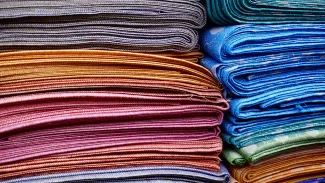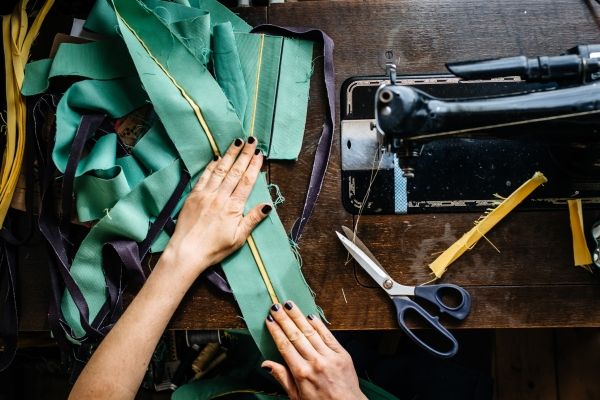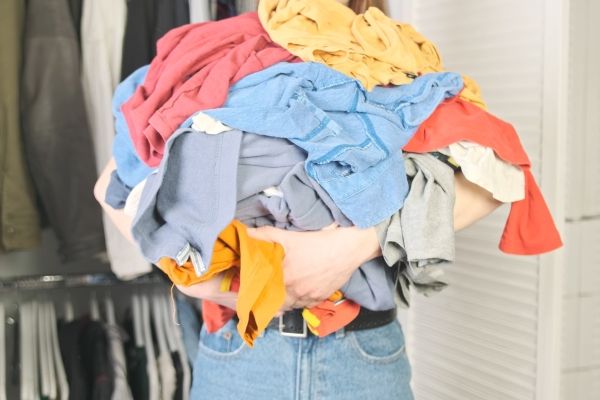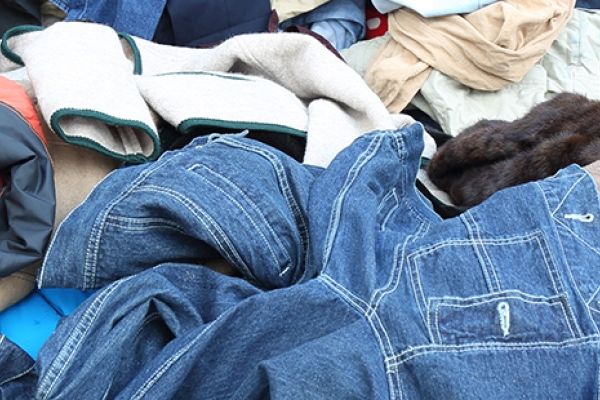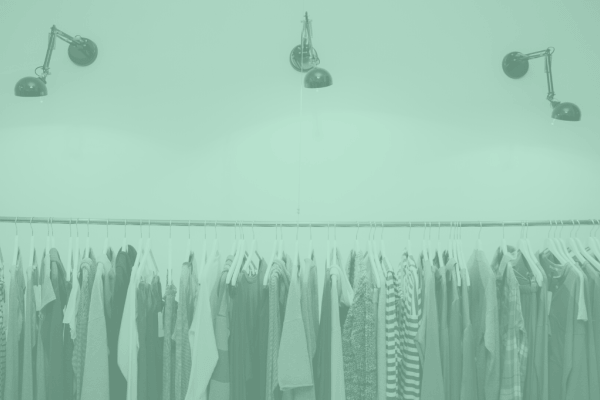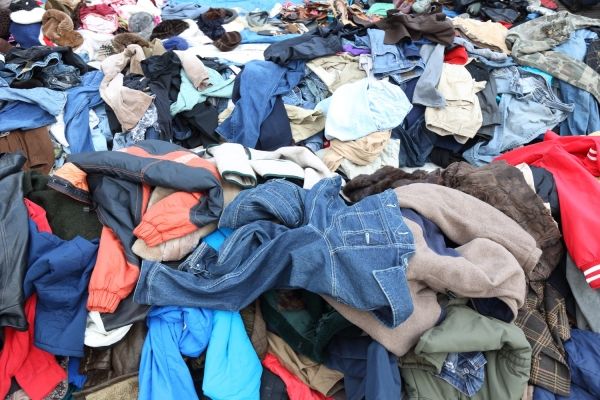The impact of our textile consumption
On average, textile consumption in Europe has the fourth highest environmental and climate impact, after consumption of food, housing and mobility. In 2020, textile consumption caused the third highest pressure on water and land use, and the fifth highest use of raw materials and greenhouse gas emissions.
An average European consumes 15 kg of textiles annually (clothing, shoes and household textiles, in 2020). What is involved?
- 53000 litres of water
- 391 kg of raw materials
- 400 m² of land
- Carbon footprint of 270 kg CO2 equivalent
- Emissions of microplastics (during washing) and chemicals (during production)
The same average European produces 11.3 kg of textile waste annually, accounting for 5.8 million tonnes per year in Europe. Of this, only an estimated one-third is selectively collected, the rest is landfilled or incinerated. Of what is collected:
- about 60 % reused (most of which outside Europe)
- 10-30 % is downcycled (insulation, padding, rags)
- 10-20 % ends up in the waste and is mostly incinerated
- less than 1 % is highly recycled into new textile fibres.
Towards a sustainable and circular textile sector
There is still a long way to go before we can speak of a circular textile sector in Europe. VITO is looking into how the European textile industry can move towards greater circularity and sustainability.
Based on research already delivered, it is clear what are the key issues the textile sector needs to focus on to reduce the negative impacts of textile production and consumption:
- Circular business models that aim to keep textile products and fibres in high-quality use for as long as possible.
- Circular design of textile products that enables longer use and reuse of textile products, thus extending the life cycle of textiles.
- Sustainable fibre choices take into account what the textile product will be used for, what is the environmental impact of the production, use and waste phase, and recyclability.
- Improved collection, accurate sorting and dismantling of textile waste in order to target more high-quality reuse and match the sorted material to the needs of recycling processes.
- High-quality reuse where textile products are not thrown away but are given a second life as second-hand products or processed into equivalent textile products.
- High-quality recycling allowing textile fibres to be reused to make an equivalent product.
Research reports
More information on the impact of the textile sector and its transition to greater sustainability and circularity can be found in the following research reports to which VITO contributed:
- Textiles and the environment in a circular economy (2019)
- Plastic in textiles: potentials for circularity and reduced environmental and climate impacts (2020)
- Study on the technical, regulatory, economic and environmental effectiveness of textile fibres recycling (2021)
- Textiles and the environment: The role of design in Europe's circular economy (2022)
- Microplastic pollution from textile consumption in Europe (2022)
- LCA-based assessment of the management of European used textiles (2023)
- EU exports of used textiles in Europe’s circular economy (2023)
- The role of bio-based textile fibres in a circular and sustainable textiles system (2023)
- Volumes and destruction of returned and unsold textiles in Europe (2024)
- Textile waste management in Europe's circular economy (2024)
SCIRT: a circular fashion project
SCIRT develops solutions to support system innovation towards a more circular fashion system and bridge the gap between supply and demand. VITO and the other SCIRT project partners are working to bring down the current barriers (technological, economic, socio-economic and regulatory) to textile recycling to achieve a sustainable circular fashion economy.
To address the demand side of the issue, SCIRT will demonstrate a complete textile-to-textile recycling system for discarded clothing, also known as post-consumer textiles. This will involve stakeholders from the entire value chain.
Reuse of fibres
The demonstration project focuses on the reuse of both natural and synthetic fibres, and fibre blends. With the support of technical partners and research institutions, clothing brands Decathlon, Petit Bateau, Bel & Bo, HNST and Xandres will develop, prototype and produce six different representative clothing types using recycled post-consumer fibres. The collections include formal and casual wear, sportswear, underwear and uniforms. In these efforts, SCIRT will prioritise quality and cost-effectiveness to ensure market confidence and encourage the wide adoption of recycled post-consumer fibres.
Supporting policies and tools
From a non-technological perspective, SCIRT will develop supporting policies and tools to facilitate the transition to a circular apparel system. This will include a framework for an eco-modulated extended producer responsibility (UPV) system and a so-called True Cost Model for quantifying circularity and making the value chain more transparent.
Additional attention will also be paid to the consumers' perspective. To this end, Citizen Labs will be set up involving consumers in different European locations, as well as a wider online platform to engage citizens throughout the project. With this, researchers will explore the perceptions, motivations and emotions that drive consumer behaviour with regard to the purchase, use and disposal of textiles.
Getting started with circular textiles yourself?
Do you want to get a clear view of the environmental impact and hot spots in the life cycle of your products or processes? Do you want to better understand what circular business models are and what they can mean for your business? Do you want advice around the use of sustainable materials or circular design? Contact Tom today.



